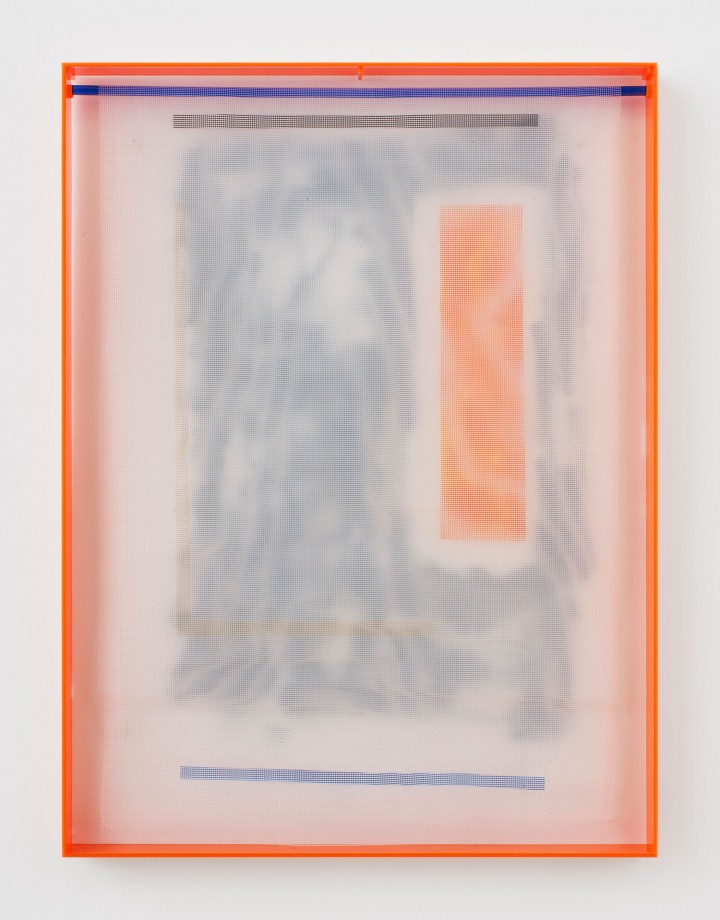Strauss Bourque LaFrance’s “No Aloha” at Rachel Uffner Gallery is a hallway that leads to a living room. Mesh screen paintings line the entryway. A thick black-and-white striped carpet — resembling Beetlejuice’s infamous suit — covers the main gallery floor, upon which freestanding mantels, screen paintings and a white parrot perched upside down on a white pole converge.
Like oversize fragments spilled from a toybox, the work is playful and bright. Minimalist mantelpieces echo 1980s Memphis Group designs, with a nod to International Style architecture. While some mantelpieces are simple posts and lintels rendered in cool faux marble, the contours of Split Vision Polo (2014) evoke that classic shirt style. In Split Vision Martini (2014), two martini glasses emerge in simple graphic lines. The sculptures mimic the shape of the domestic centerpiece, but float, freestanding within the room, rather than lean against the wall like the real thing.
The artist toys with the notions of set and tableau, of real and fake. Bourque-LaFrance’s works are reproductions of functional objects, rendered slightly askew and in unconventional materials. In Showpiece (2014) a bronze remote control rests atop a mantel, no television set in sight. The work teeters between sculpture and prop in a Pop and kitsch universe. In Sushi Scene for Six (2014) the artist presents a play meal of elongated shrimp tempura, distorted sashimi and rubber-band-fastened rolls. The sushi is most appealing in its intricacy (tiny paint specks of roe, zigzag foam seaweed, etc.). It is fake food at its finest, a study in shape, construction and the aesthetics of appetite.
Elsewhere, Bourque-LaFrance’s plastic mesh paintings hang like window screens on these living room walls. Aptly named the “vacation paintings,” they are portals into abstraction and melting, half-formed figures intended to explore escapism and contemporary ways of seeing. Some manifest as backdrops to the set. Others pull the viewer into this “vacation” space. In the living room and miles away, the artist’s work exists both at home and far away, in spaces familiar and unknown.

